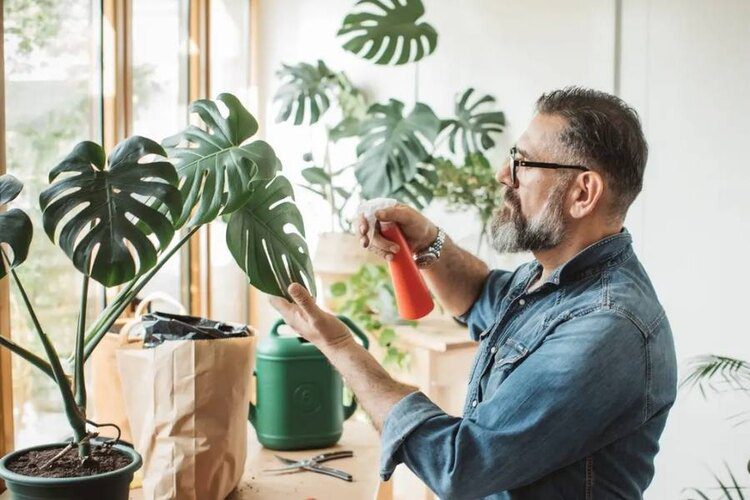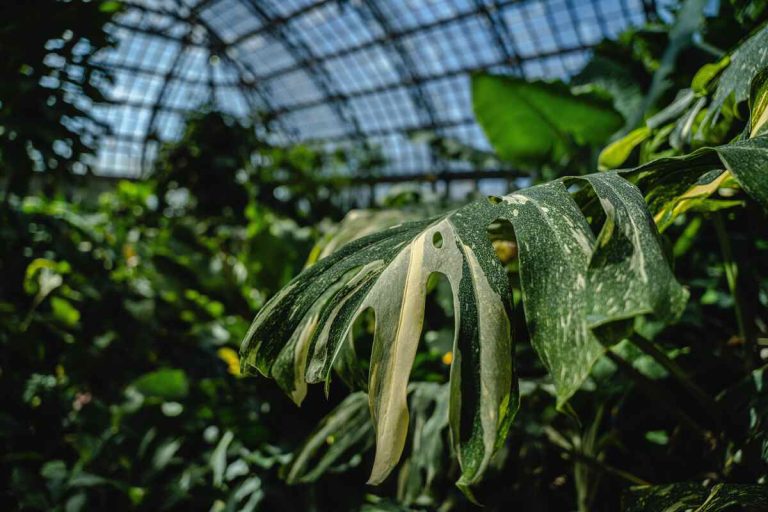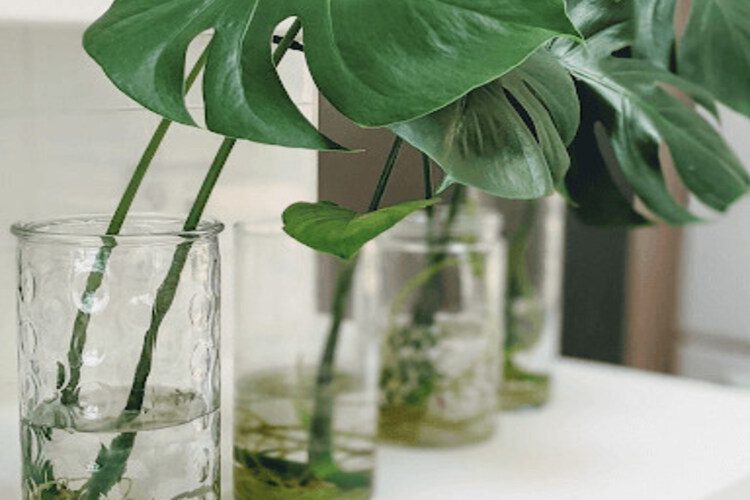Why Are My Monstera Leaves Curling: 7 Possible Causes

Monstera is a famous tropical indoor crop known for its remarkable highlights. Monstera leaves curling is often a signal of trouble that can be set by the owner. You can restore the health of your betel leaves by making the necessary adjustments to their environment.
Let’s check out some small tips to keep your Monstera plant healthy.
What Causes Monstera Leaves Curling?
Water stress, excessive light, pest attacks, high temperatures, overfertilizing, soil issues are the main problems that make Monstera leaves curl.
Water stress
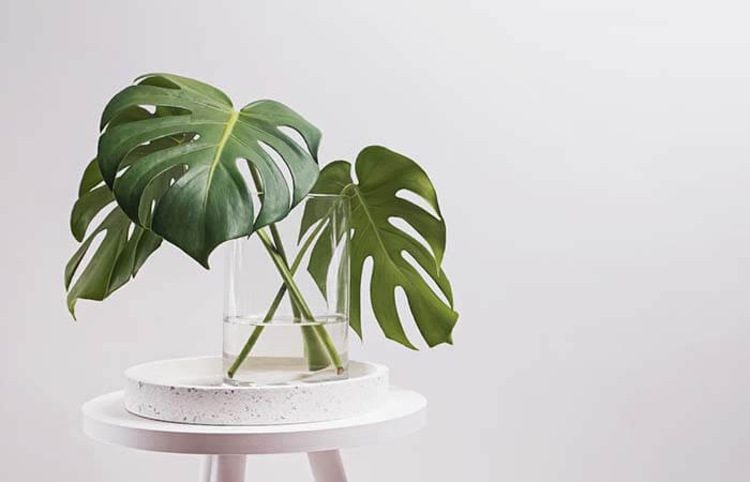
Check the soil first if you’re trying to determine why the leaves are curling. Overwatering is the most serious cause of curled leaves. Overwatered plants will wilt and turn yellow. Root rot is a simple result of careless overwatering of the plant. After removing unhealthy roots, repot the plant right away to ensure its survival. Water logging is the result of overwatering. Additionally, drooping, brittle leaf tips, extremely dry soil, and brown leaves are signs of waterlogging. Deliciosa plants require rapid attention, including full watering.
Watering should continue until the drainage holes are completely clear of water. Every few days, assess the state of the leaves and the soil’s dryness to prevent future waterlogging. The amount of water that the Monstera plant needs will change with the season, rate of growth, temperature, and illumination. As a result, you shouldn’t stick to a set watering schedule. Besides, you can use a pebble tray for more stable water regulation. Dehydration is another factor in the development of curly leaves on Monstera. Your plant will respond by decreasing the leaf surface area and transpiration if you reduce the water it receives, and it will become dehydrated.
Too much direct light
Monstera is a rainforest plant that does not require as much lighting as other rainforest trees and plants since it does not grow as tall as them. As a result, Monstera dislikes direct sunlight. Chlorophyll in the leaf degrades as a result of intense sunlight and heat. Damage occurs in sections that are light, bleached, or faded. Over time, these patches start to turn brown and crumble. Strong sunlight combined with dry soil conditions worsens symptoms. Furthermore, direct sunlight can cause the plant’s leaves to burn and tan, so avoid it if you want your Monstera to be happy.
Pests/diseases attack

If your Monstera Deliciosa has pests like mealybugs, spider mites, or thrips, the leaves may curl. The required water is lost from the leaves as these pests consume plant juice. Although the plants and soil are likely receiving adequate water, these pests will cause moisture to decrease before reaching the leaves. To find pests on plants, look at the underside of the leaves and the stem joints. Yellow rings or patches on the foliage are yet another sign that pests are eating it. Neem oil may quickly get rid of small infestations. But first, keep healthy plants away from the diseased Monstera.
High temperature
Extreme heat is uncomfortable for houseplants like Monstera plants. The leaves may curl as a result of warm winds or hot temperatures. A plant’s response to temperature variations is called leaf rolling. If your plant is near a fireplace or in a hot outdoor location, move it. Curled leaves are a protective strategy for retaining moisture because flat leaves lose moisture more quickly. As the weather changes, Monstera plants may become temperature-stressed, especially in the sweltering summer heat. Temperature changes harm Monstera. Maintain a comfortable indoor temperature and keep the plant away from heaters, fireplaces, and windows that let in a lot of wind. In addition, Monstera plants may also exhibit the dripping water phenomenon, which is a natural process that occurs when the plant’s leaves release excess water vapour. This is not harmful to the plant and can be seen as a sign that the plant is healthy.
Low humidity
Large leaves on Monstera curl if the humidity is too low. If your plant’s leaves have brown tips or edges and are curled, it needs more water. A hygrometer can be used to measure the humidity level. Low air humidity is not the reason for the leaves curling if the average humidity is greater than 40%. In particular, if there is inadequate air circulation around your Monstera Deliciosa plant, excessive air humidity might be detrimental. It is very likely to cause fungal issues that cause the leaves to curl or become damaged.
Over FeFertilisati
Enough amounts of soluble salts in the potting medium are caused by over-fertilizing commercially farmed potted or containerized crops. These salts harm roots indirectly by making it more likely for some root diseases and damping-off to infect the plants, as well as directly by decreasing the net flow of water into the roots.
Soil problems
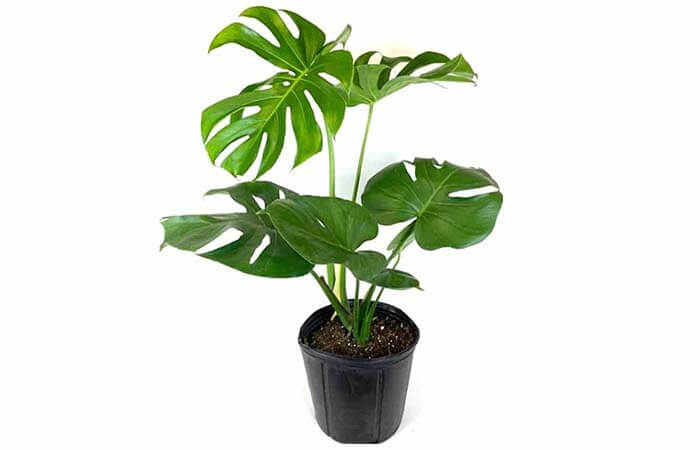
Issues with the soil are at the root of so many of Monstera’s health issues, including leaf curl. As we previously stated, soil issues, rather than providing your plants with too much or too little water, are frequently the cause of watering issues. It is important to pay attention to the pH and nutrient levels of your soil because they can also have a significant impact on the health of your plants.
Compacted soil
Long-term storage of soil in the same container can cause it to become dense and hard. This frequently happens when a plant hasn’t been replanted in a year or more. When this happens, water may appear to sit on top of the soil rather than permeate it quickly. On the other hand, if the soil does manage to absorb the water, it could do so improperly by holding onto it for an excessive amount of time. This could result in over- and under-watering problems! Having said that, it’s critical to keep your plant’s soil aerated by repotting every year or loosening the soil with a chopstick or dowel regularly.
Small pot
Root growth can be hampered by inadequate pots. This can cause the plant to become root-bound, which means that the roots have no more room to grow. A root-bound plant will not be able to get the nutrients and water it needs, and the leaves may start to yellow and fall off.
Nutrient Deficiency
When a plant lacks an important nutrient needed for growth, it is said to be nutrient deficient. Plants that are lacking in vital nutrients will not grow properly and exhibit a variety of symptoms.
Some tips for dealing with Monstera leaves curling
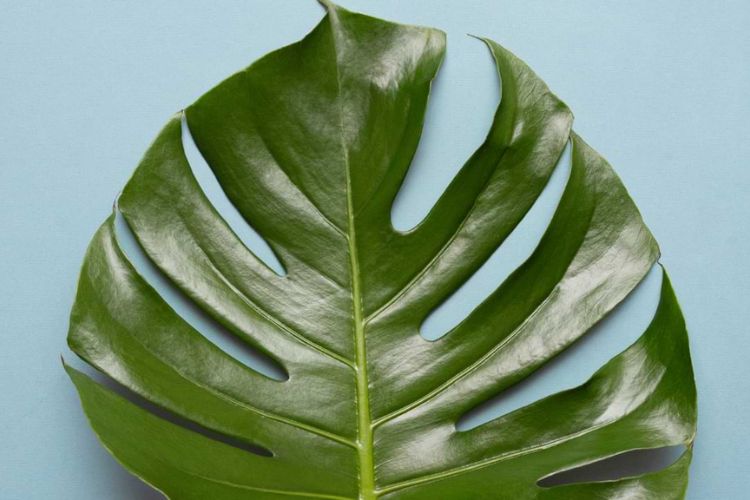
The following factors will ultimately determine if Monstera leaf curl occurs:
- Maintaining aerated soil and repotting it each year will ensure that it drains properly.
- If your Monstera’s moisture metre reads 3 to 4 or if the first few inches of soil feel dry to the touch, water it thoroughly.
- Apply a balanced liquid fertiliser regularly.
- Avert direct lighting and draughty, hot, or cold areas.
- Be cautious of insects. Neem oil should be used to treat your plants if you see them.
- If your Monstera is not getting enough light, it may start to curl its leaves. You can try moving it to a brighter location or using a grow light.
In other words, the best approach to preventing leaf problems on your Monstera is adequate, regular maintenance. We understand it, though! Giving your plant all it needs can be challenging at times. With a little practise and information, you’ll be an expert!
Conclusion
On betel leaves, Monstera leaves curling frequently indicates an issue that is simple to remedy. You can restore the health of your betel leaves by altering the environment so that it can adequately care for them.
FAQs


